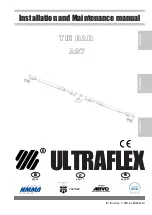
Sentry Air Systems Inc. AirHawk DCH Hoods
| Operation and Maintenance Manual
Model AirHawk
| © 2020 Sentry Air Systems, Inc.| 713-690-2153 | Rev 2
Page | 6
2.2
Appropriate Placement
2.2.1 Allow Room for Filter Replacement
It is important to position your Sentry AirHawk DCH with sufficient clearance from walls,
ceiling and other equipment so that you can perform the actions necessary to manipulate the
filter screws and replace the filters.
2.2.2 Exhaust/Intake Considerations
DCH systems exhaust air out of the hood through the filters.
When placing the unit into the work environment, make sure that there is at least 12” of
clearance between the top of the fan/filter chassis and any potential obstruction of the airflow.
Avoid blocking or pointing an airflow or cross draft from a fan or vent at the sensor hole located
on the left-hand side of the containment hood. Doing so may cause the unit to produce spurious
or unreliable readings.
2.2.3 Work Surface
Place your DCH on a stationary work surface, with appropriate spacing and positioning relative
to other equipment.
We do not recommend the placement of the unit on a cart for any purpose other than relocation;
when doing so; transport the fan/filter chassis separately and safely.
2.2.4 Operating and Storage Environmental Conditions
Operating temperature within the hood should not exceed 170°F or
material integrity may be compromised.
•
Ambient operating temperature: 33°F to 110°F
•
Storage temperature: 33°F to 100°F
•
Ambient operating humidity: 90% relative humidity maximum, non-condensing
•
Storage humidity: 90% relative humidity maximum, non-condensing
2.2.5 Power Requirements
Your DCH plugs into a 115-volt, 60-Hz, single-phase grounded electrical outlet.
Failure to supply correct input power to the DCH may result in injury to
personnel and/or damage to equipment.






































